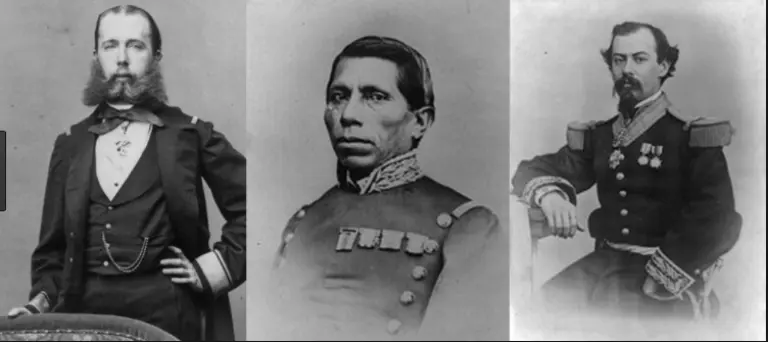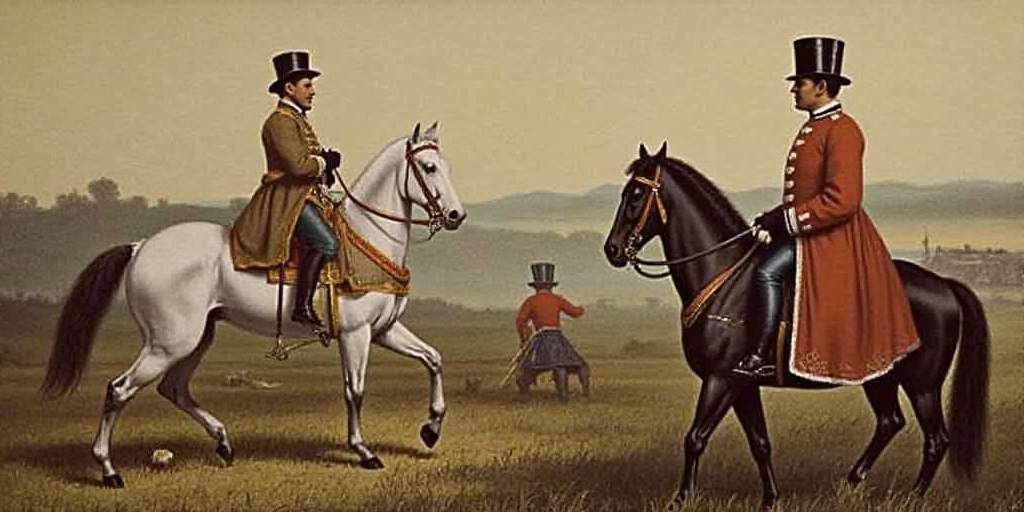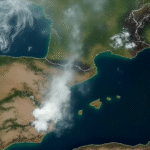Introduction
In mid-May of that year, those trapped in the city of Querétaro—the conservative army, French supporters, and enemies of Benito Juárez—had no means to defend themselves. Napoleon III had ordered the withdrawal of French troops from Mexico and, driven mad by disregarding Empress Carlota’s pleas, the once-glorious eight-thousand-man army was reduced to five thousand. It was the year 1867.
Desperate Situation
The situation was bleak. In the name of Maximiliano I’s Imperial Mexico and under General Márquez’s orders, sodium nitrate (salitre) was extracted, and wood was burned to produce gunpowder. Bells were melted for artillery projectiles, roofs were stripped for rifle bullets, and there were even plans to sacrifice horses for a feast. For days, soldiers hadn’t tasted either brandy or coffee.
Emperor Maximiliano had contemplated a surprise attack to break the siege and create an escape route. Some, in good French and others in poor Spanish, rallied the weary troops, claiming that against such a savage, faithless, and dishonorable enemy (the republicans), any sacrifice was necessary to save the faithful imperial army from barbarism.
However, all hope was lost. Colonel Méndez fell ill and requested 24 hours to recover. General Miramón gazed at the sky without speaking, while Mejia asked God for one more day of protection. Maximilian did not object to the delay, but fate had already been sealed.
Betrayal and Capture
Miguel López, once a valued imperial soldier, was later disdained by all after the battle. Accused by Miramón’s soldiers of selling the secret to taking Querétaro for thirty thousand pesos, he was supported by some, lynched by others, and chaos ensued. In reality, the enemies of the Republic were already low on ammunition and lacked any valid reason.
Rumor had it that when Maximiliano learned (through his secretary José Blasio) that the Convent of the Cross was in enemy hands, he became confused and naive. He took his horse, armed himself with two pistols, and headed to Cerro de las Campanas to help the troops. But there was nothing left of the troops.

.
Miramón had stumbled upon the Juarista army while leaving his refuge, bearing a bullet graze on his face. Mejia’s soldiers searched for something resembling a white flag. The only one seemingly unperturbed was a tall, well-built military man named Ramón Corona. He gently took Maximilian, handed him over his sword, and led him to Mariano Escobedo’s tent. “I am your prisoner,” Maximilian said.
Trial and Execution
On June 14, a martial court convened at Querétaro’s theater. Maximilian, who had been ill and resting for a few days, did not attend. Miramón and Mejia appeared with their respective lawyers, but the verdict was clear: Maximilian was accused of usurping Mexico’s sovereignty and threatening its independence, while Miramón and Mejia were seen as constant obstacles and threats to the Republic’s peace and consolidation.
All three were sentenced to death.
Execution
At six in the morning on June 19, 1867—just as this week will fall for you, dear reader—Maximilian, Mejia, and Miramón were taken to Cerro de las Campanas. The firing squads marched toward them.
Maximilian approached the wall with the serenity of someone fulfilling a fatal destiny. He was placed “facing Querétaro” alongside Miramón and Mejia. Some say he gave a coin to each soldier before him, that Miramón rejected the accusations of treason just before being shot and that Mejia suffered an acute rheumatism attack, displaying complete serenity before death.
For a moment, an eerie silence reigned. The officer in charge lowered his sword. Seven shots rang out, and Emperor Maximilian I fell to the ground, pierced by five bullets. Miramón and Mejia followed. They are said to have shouted “Viva Mexico!” before their deaths.
Their bodies were taken to the Convent of Capuchin Nuns; Maximilian’s was placed in a dilapidated, greasy coffin while Mejia and Miramón were put in decent ones. Maximilian and Mejia’s funerals reportedly went to the temple, while Miramón’s was taken to his wife’s home.
With the execution of Maximilian, Miramón, and Mejia, 158 years ago, the second and final Mexican empire ended. Yet, the stories, sayings, rumors of those and other empires still linger.
Key Events and Figures
- Maximilian I of Mexico: Born Archduke of Austria, Maximilian was installed as Emperor of Mexico by French intervention in 1864. His reign aimed to establish an Austrian-style empire in Mexico but was ultimately unsuccessful.
- Benito Juárez: A prominent Mexican politician, Juárez served as president during the second Mexican Empire’s struggle for power. His administration focused on preserving Mexico’s sovereignty and resisting foreign intervention.
- Napoleon III: Emperor of the French, Napoleon III supported Maximilian’s claim to the Mexican throne as part of his ambition to expand French influence in the Americas.
- General Márquez: A Mexican general loyal to Maximilian, Márquez ordered the desperate measures taken by besieged forces in Querétaro, including extracting sodium nitrate and melting bells for artillery.
- Ramón Corona: A Mexican military officer who, after the fall of Maximilian’s empire, took charge of capturing and delivering Maximilian to his executioners.






